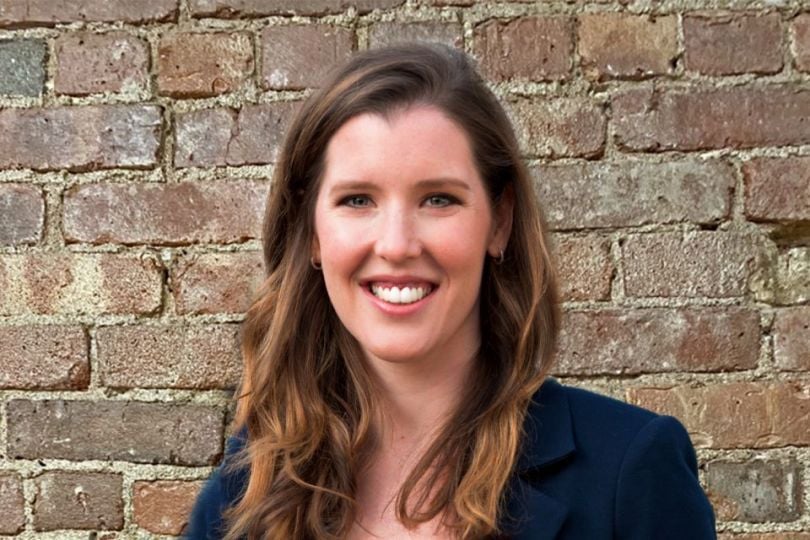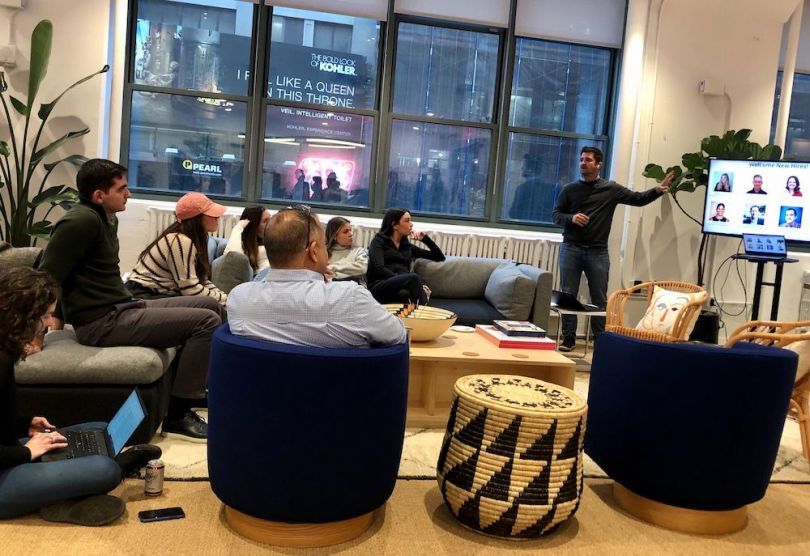In B2B marketing, separating buzzwords from best practices isn’t always easy.
Should your team focus on content marketing, and if so, what type of content should they produce? Is account-based marketing really viable or just an acronym that rolls right off the tongue? How do you develop one plan that covers all your customers when the businesses you sell to all fit a different profile?
Developing a cohesive B2B marketing strategy and implementing it is challenging. For Liana Guzmán, Skillshare’s CMO, the key is to focus on creating value for both customers and prospective clients, which has led the company’s market team to focus on thought leadership.
“By focusing on the needs of our current and prospective clients in a relevant and timely manner, we were able to drive a significant increase in influenced opportunities and new leads while also driving increased customer engagement and value,” Guzmán told Built In.
In addition to Guzmán, Built In spoke with four marketing leaders, who shared how their B2B marketing strategies were developed and implemented — along with what buzzwords and trends are actually worth watching out for.
B2B Strategies Teams are Utilizing
- Content marketing
- Virtual events
- Personalized campaigns
- Targeted ads and account-based marketing

Ribbon Health
How do you formulate a B2B marketing strategy around a highly technical product designed to be used by different types of customers in a complex industry? One of the strategies employed by Stephanie St. Thomas, head of marketing at healthtech data platform Ribbon Health, is to let her company’s customers do the talking. According to St. Thomas, highlighting customer stories in blogs, podcasts and one-pagers enables Ribbon Health to easily relate the benefits of its platform to prospects.
Of all the B2B marketing strategies your team employs, which have you found to be the most effective or to have the best ROI?
As a healthcare data platform, we hold information on providers: who they are, where they’re located, which insurances they accept and the cost and quality of the care they deliver. As you can imagine, this information is critical for every healthcare decision, but those healthcare decisions happen in different contexts for different people. Consumers make them when finding a doctor or choosing a health plan, and enterprise healthcare organizations make them when determining who they want to contract with and how to direct patients to the right care.
For us, the most effective strategy is bringing these many different customer voices forward to give clarity around how our platform works in the real world. This is the simplest way to relate to prospects, especially in a virtual world where these conversations that would otherwise happen at conferences are much harder to come by.
For us, the most effective strategy is bringing these many different customer voices forward.”
What are the specific tactics you’re using to implement this strategy?
We are finding as many virtual ways to tell customer stories as possible: through our blog, one-pagers, podcasts, emails and warm introductions. While in the past I hadn’t found social channels to be particularly effective, I’ve been surprised at how helpful LinkedIn and Twitter have been for us to expand our audience and get meaningful engagement with our customer stories.
What’s a B2B marketing trend you’re watching at the moment, and how do you hope to apply it in your own work?
I’ve been very curious to see how the industry reacts to the lack of conferences. This has always been a tried-and-true method to develop meaningful, new relationships with people. In general, I know attention spans just can’t be what they used to be, and we work to keep our messaging clear, short and sweet to help capture people’s attention without asking them to do too much to learn about our solutions.

Skillshare
According to Liana Guzmán, CMO at Skillshare, account-based marketing is here to stay. In addition to narrowing the focus of B2B marketers around more high-value leads, Guzmán is also big on account-based marketing because of its potential to bring sales and marketing teams together around a common goal.
Of all the B2B marketing strategies your team employs, which have you found to be the most effective or to have the best ROI?
I find that many companies focus their marketing strategies around their desired outcome rather than on where they can drive the greatest value for current and prospective clients. At Skillshare, we’ve seen again and again how a culture of creativity can foster the best in employees, increasing work satisfaction and productivity. Bringing those findings to light has driven the greatest marketing impact, and we find that thought leadership is one of the greatest tools to do that.
For example, immediately after the work-from-home orders went into effect, we hosted a webinar led by a remote workplace expert. While it wasn’t a topic that tied directly to our product, we were acutely aware that our customers, along with everyone else, were worried about navigating the new world of remote work. By focusing on the needs of our current and prospective clients in a relevant and timely manner, we were able to drive a significant increase in influenced opportunities and new leads while also driving increased customer engagement and value.
Account-based marketing has always been a buzzword, but today it’s something that every B2B marketing team needs to implement.”
What are the specific tactics you’re using to implement this strategy?
What I love about thought leadership is that you can more easily maximize its success by mapping content around the same theme to every stage of the buyer’s journey. For the remote leadership webinar, we built a strategy that targeted specific segments based on their lifecycle stage. For example, we created Skillshare class recommendations for customers and downloadable templates for prospects, all of which were centered on the webinar’s theme of remote leadership and team productivity.
What’s a B2B marketing trend you’re watching at the moment, and how do you hope to apply it in your own work?
Account-based marketing has always been a buzzword, but today it’s something that every B2B marketing team needs to implement so that the sales team doesn’t just have to rely on inbound campaigns and ineffective mass outbound campaigns.
This is something we’re increasingly focused on implementing on the B2B side of the business, and to get there we’ve been homing in on our first “ideal customer profile.” It’s an entire shift in mindset and a reimagining of the funnel. More leads are not always better. Rather, being hyper-focused about target segments and proactively nurturing those relationships drives better outcomes. Plus, it unifies the sales and marketing teams around one goal!

Gympass
Ray Lin, senior director of global enterprise growth at corporate wellness company Gympass, has had to make adjustments on the fly throughout the pandemic. For example, the company’s marketing team began experimenting with online gifting after the shift to working from home reduced the reach of their direct mail campaigns. What hasn’t changed, however, is the team’s focus on content marketing, which Lin said enables Gympass to engage with HR decision-makers about the topics they truly care about.
Of all the B2B marketing strategies your team employs, which have you found to be the most effective or to have the best ROI?
Content marketing has been the foundation of our overall B2B strategy. It takes many different forms, such as webinars, whitepapers, e-books, infographics and videos, all with the common purpose of creating solutions-oriented engagement with enterprise decision-makers. We create static and interactive content to engage our target audience — benefits leaders — on the topics that connect the employee issues they care about, like mental and physical health, productivity and retention, with Gympass’ value proposition.
In a similar way that artists express their philosophy and who they are through their art, we really try to do the same as B2B marketers through our content and distribution channels. It’s empowered us to speak through a clear voice and let people know what Gympass stands for and helps HR teams solve.
What are the specific tactics you’re using to implement this strategy?
During the pandemic, we’ve obviously had to pivot our field marketing strategy toward virtual events. Our team has created webinar programming with content that touches on things that matter to HR professionals, with sessions including, “The Future of Wellness Programs in a Post-COVID World,” “How Do You Design the Future of Work for Well-Being” and “The Importance of Supporting Employee Wellness During Uncertain Times.”
On the digital marketing side, we’ve similarly prioritized developing content that establishes Gympass as a thought partner on topics such as avoiding employee burnout, how to promote and support mental health, and employee wellness program best practices. We share this content with different HR organizations and publishers to start a conversation about wellness at their companies.
In a similar way that artists express their philosophy and who they are through their art, we really try to do the same as B2B marketers.”
What’s a B2B marketing trend you’re watching at the moment, and how do you hope to apply it in your own work?
Account-based marketing, or ABM, is a very hot topic right now. Everyone in B2B marketing is rethinking what a marketing-qualified lead is and should be, and we definitely have, too. We’ve prioritized taking a personalized, conversational and solutions-oriented approach to marketing and selling to our customers, but we’re looking to scale up ABM even more to go after the target accounts on our “wish list.”
Since conventional direct-mail marketing to business addresses has become irrelevant during the pandemic, one example of ABM we’ve tested is personalized online gifting. We’ve seen our U.S. outbound opportunity creation rate more than double quarter-over-quarter as a result, and we’re looking to scale this tactic globally and incorporate it into the sales and marketing ABM tool belt as opposed to just running ad hoc campaigns.

Prodege
TikTok, the app that delivered us “Kombucha Girl” and whose user base consists largely of teenagers and young adults, is becoming a new tool for B2B marketers.
Jessica Batty, a marketing executive at online consumer rewards platform Prodege, said she and her team have recently noticed an increase in adoptions of informal marketing platforms like TikTok.
“There has been a pivot toward more relatable, honest and empathetic marketing messaging in B2B, and these platforms are becoming more commonplace,” Batty, the VP of marketing and corporate communications, said.
While Batty said she’s keeping an eye on this trend, Prodege’s marketing team continues to lean into their vast network of more than 120 million global members to collect intel.
Built In LA caught up with Batty to learn more about Prodege’s most effective marketing tactics and the future of B2B marketing.
Of all the B2B marketing strategies your team employs, which have you found to be the most effective or to have the best ROI?
The best B2B marketing strategy that our team employs is leveraging our global audience of over 120 million to gather timely, of the moment, consumer insights.
We’re able to reach a targeted audience on demand and use that data to better educate our partners on emerging trends. By sharing these insights with our marketing partners, they’re better able to customize their campaigns and build their audience or grow sales and revenue, resulting in a win for all involved.
Recent research that we’ve conducted has helped showcase what type of vacations consumers are looking into, uncovered insights on how guests really feel about weddings, and covered hot-button topics such as the pandemic and natural disasters.
What are the specific tactics you’re using to implement this strategy?
These include personalized email campaigns, verticalized markets, engaging blog content of timely data and insights, digital marketing campaigns, presentations via webinar, or virtual conferences. This ensures that we’re reaching our current partners, but also prospecting for new leads.
What’s a B2B marketing trend you’re watching at the moment, and how do you hope to apply it in your own work?
One of the trends we’re watching and learning from is more informal marketing by way of engaging short-form video platforms, like TikTok, Instagram Reels and Snap.
This type of marketing has typically been more informal and leveraged strongly in B2C but we’re noticing that with the events of the past several months, there has been a pivot toward more relatable, honest and empathetic marketing messaging in B2B, and these platforms are becoming more commonplace.
Syndigo
Bryce Sack
DIRECTOR OF MARKETING AUTOMATION AND DEMAND GENERATION

Of all the B2B marketing strategies your team employs, which have you found to be the most effective or to have the best ROI?
At Syndigo, in 2019, we launched our strategic ABM initiative, focused on targeting specific high value accounts with relevant advertising on multiple channels. The platform we chose enables us to target accounts based on a variety of criteria from industry and job title, all the way down to specific named accounts. It also provides next-level engagement data from these accounts, which is directly linked back to our CRM and accessible for all sales and account managers. We knew that for this to work effectively, we had to partner closely with our sales and account managers on how to implement ABM (selecting target accounts, leveraging the data, following up with interactions, etc.) into their daily workflows for joint success.
What are the specific tactics you’re using to implement this strategy?
In a coordinated effort with our sales team, we determine the accounts to target and then use that data to help prioritize their account outreach. This data includes things like web visits or intent signals, which helps our sales team determine which accounts are ready for a proactive sales outreach. On the other side, account managers will use ABM data to get more context on accounts they are already working and help determine which of their target accounts are currently engaging with specific content. Though difficult to track ROI directly, we are given unique transparency into the entire account’s engagement with our digital properties that is easily presented back to sales. As we continue to evolve our ABM strategy, we are building out detailed reporting and attribution models to better track our success through the entire pipeline.
We are building out detailed reporting and attribution models to better track our success.”
What’s a new strategy your team has tested in recent months, and what were the results?
While not a new strategy, we did go all-in on webinars and digital events once COVID-19 hit to continue engaging with our clients and prospects. The webinars started out being product-focused with only Syndigo teams presenting, but as we figured out the process, we were able to increase the quantity and the quality by partnering with clients to make the events even more engaging. With 70 percent of webinar attendees being clients, we were able to get different clients in one digital room to share the latest news and updates.




